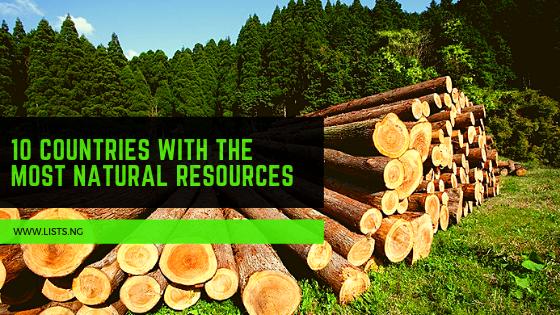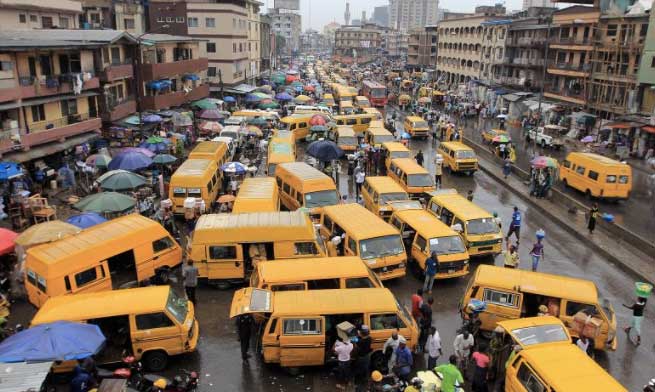Natural resources are raw materials which are used to produce and manufacture all of the products we use. They are the commodities which exist without any action from human beings. These resources are scattered all over the world, and whether extracted or not are valuable. These commodities have also become the backbone of many economies in the world, and as such, they are continuously sought after. But what countries have them the most?
Here are the top 10 countries with the most natural resources in the world include
1. China
China is the country with the most deposits of natural resourses in the world, with an estimated worth of $23 trillion. China is one of the leading producers of phosphates, vanadium, tungsten, antimony, graphite, coal, tin, molybdenum, lead, zinc, and gold. They are the second top producers of manganese, bauxite, cobalt, silver, and copper. 90% of the natural resources in the state include rare earth metals and coal. Other critical natural commodities in China include timber, chromium, and gem diamond.
2. Saudi Arabia
Oil has been the primary natural resource in Saudi Arabia since it was discovered on March 3 1938. Saudi Arabia now has 20% of the world’s oil reserves and the country has been a leading oil exporter in the world. The country controls the sixth biggest natural gas reserves. Saudi Arabia also has the sixth-largest natural gas reserves and large amounts of timber. Its other natural resources include copper, feldstar, phosphate, silver, sulfur, tungsten and zinc. Overall, the Saudi Arabia has about $34.4 trillion worth of natural resources.
3. Canada
Canada has the third largest oil deposits after Venezuela and Saudi Arabia. Other commodities in the country include industry minerals, such as gypsum, limestone, rock salt and potash, and energy minerals, such as coal and uranium. Metals in Canada include copper, lead, nickel and zinc, and precious metals are gold, platinum and silver. Canada is the leading supplier of natural gas and phosphate and is the third largest exporter of timber. Canada’s natural resources is estimated to be worth over $33.2 trillion.
4. India
India’s mining sector contributes 11% of the country’s industrial GDP and 2.5% of total GDP. In 2010, the mining and metal industry was worth over $106.4 billion. India’s coal reserves are the fourth largest in the world. Other natural resources include bauxite, chromite, diamonds, limestone, natural gas, petroleum and titanium ore. India provides over 12% of global thorium, over 60% of global mica production and is the leading producer of manganese ore.
5. Russia
The Russian mining industry is one of the biggest in the world, producing a wide range of commodities including mineral fuels, industrial minerals, and metals. Russia is one of the leading producers of vanadium, silicon, palladium, nitrogen, magnesium metal and compounds, copper, arsenic, cement, and aluminum. Russia is also the second largest exporter of rare earth metals. The natural resources in the country are valued at over $75 trillion.
6. Brazil
The mining industry in Brazil primarily focuses on bauxite, copper, gold, iron and tin. They have the largest gold and uranium deposits in the world, and is the second largest iron producers. However, timber is the most valuable natural resource, and the country accounts for over 12.3% of the world’s timber supplies. The natural resources in Brazil are estimated to be worth over $21.8 trillion.
7. United States
The mining industry has been an important industry in the United States since the nineteenth century when more minerals were discovered. It was estimated in 2015 that the total metals and coal reserves in the United States were valued at $109.6 billion. Further more, The mining industry has employed over 158,000 people directly. The United States is the leading producers of coal, and currently, they control over 31% of the global coal reserves and a significant amount of timber. The total natural resources in the country are valued at $45 trillion with over 89% of them being timber and coal. The United States also significant deposits of copper, gold, oil and natural gas.
8. Venezuela
Venezuela is a leading producer and exporter of numerous minerals including oil, iron ore, gold, coal, and bauxite. The state has over $14.3 trillion worth of unused natural resources, and a majority of their minerals are state-controlled. Venezuela’s oil reserve is larger than that of United States, Mexico and Canada combined. Venezuela is the third largest Latina America coal producer right behind Brazil and Colombia, and they also have the second-largest reserves of gold deposits. They have the eighth largest natural gas reserves in the world which account for about 2.7% of the world’s supply.
9. Democratic Republic of the Congo
The mining industry is the most significant source of export income for Congo DR. As of 2009, the country had over $24 trillion in unexploited mineral deposits, and this included biggest coltan reserve in the world and also their significant cobalt quantities. In 2011, there were over 25 international mining firms in Congo DR. The state is also known for its large gold, tin, tantalum, diamond, copper, and cobalt reserves. More so, the American geological survey estimates that the country has over a million tons of lithium.
10. Australia
Australia has a very large deposit of raw materials in the world which is why it earns $19.9 trillion per year from mining alone (Australia’s primary industry). Australia is known for its large reserves of coal, timber, copper, iron ore, nickel, oil shale and rare earth metals. Australia is also one of the leaders in uranium and gold mining. They have the largest gold reserves in the world, they supply about 14.3% of the world’s demand, and also contribute over 46% of the world’s uranium. Australia is the top producers of opal and aluminum.




Dropped waivers.